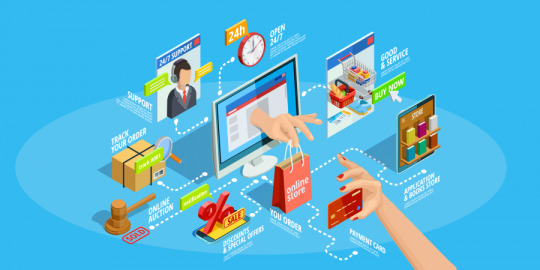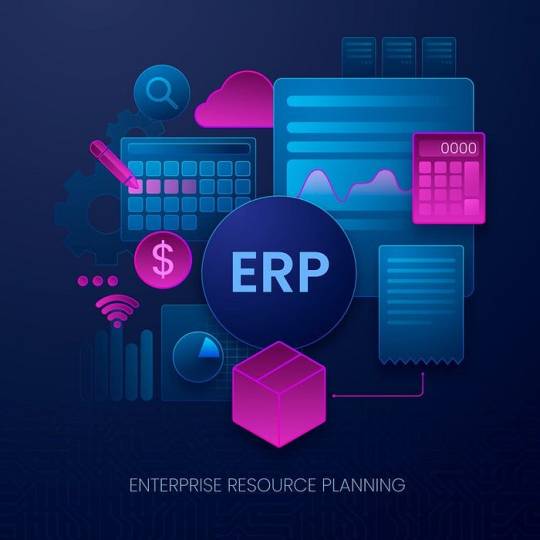#Ecommerce App Steps
Explore tagged Tumblr posts
Text
In this article, We provide ecommerce mobile app development steps, key features, trends and valuable insights to build immersive ecommerce mobile app.
#Ecommerce Mobile App Development#ecommerce app development#Ecommerce App#App Development#Mobile App Development#Ecommerce App Steps#Ecommerce App Key Features#Ecommerce App Trends#Arizona#USA#SkyTech Mobile
0 notes
Text
MIT libraries are thriving without Elsevier

I'm coming to BURNING MAN! On TUESDAY (Aug 27) at 1PM, I'm giving a talk called "DISENSHITTIFY OR DIE!" at PALENQUE NORTE (7&E). On WEDNESDAY (Aug 28) at NOON, I'm doing a "Talking Caterpillar" Q&A at LIMINAL LABS (830&C).

Once you learn about the "collective action problem," you start seeing it everywhere. Democrats – including elected officials – all wanted Biden to step down, but none of them wanted to be the first one to take a firm stand, so for months, his campaign limped on: a collective action problem.
Patent trolls use bullshit patents to shake down small businesses, demanding "license fees" that are high, but much lower than the cost of challenging the patent and getting it revoked. Collectively, it would be much cheaper for all the victims to band together and hire a fancy law firm to invalidate the patent, but individually, it makes sense for them all to pay. A collective action problem:
https://locusmag.com/2013/11/cory-doctorow-collective-action/
Musicians get royally screwed by Spotify. Collectively, it would make sense for all of them to boycott the platform, which would bring it to its knees and either make it pay more or put it out of business. Individually, any musician who pulls out of Spotify disappears from the horizon of most music fans, so they all hang in – a collective action problem:
https://pluralistic.net/2024/06/21/off-the-menu/#universally-loathed
Same goes for the businesses that get fucked out of 30% of their app revenues by Apple and Google's mobile business. Without all those apps, Apple and Google wouldn't have a business, but any single app that pulls out commits commercial suicide, so they all hang in there, paying a 30% vig:
https://pluralistic.net/2024/08/15/private-law/#thirty-percent-vig
That's also the case with Amazon sellers, who get rooked for 45-51 cents out of every dollar in platform junk fees, and whose prize for succeeding despite this is to have their product cloned by Amazon, which underprices them because it doesn't have to pay a 51% rake on every sale. Without third-party sellers there'd be no Amazon, but it's impossible to get millions of sellers to all pull out at once, so the Bezos crime family scoops up half of the ecommerce economy in bullshit fees:
https://pluralistic.net/2023/11/06/attention-rents/#consumer-welfare-queens
This is why one definition of "corruption" is a system with "concentrated gains and diffuse losses." The company that dumps toxic waste in your water supply reaps all the profits of externalizing its waste disposal costs. The people it poisons each bear a fraction of the cost of being poisoned. The environmental criminal has a fat warchest of ill-gotten gains to use to bribe officials and pay fancy lawyers to defend it in court. Its victims are each struggling with the health effects of the crimes, and even without that, they can't possibly match the polluter's resources. Eventually, the polluter spends enough money to convince the Supreme Court to overturn "Chevron deference" and makes it effectively impossible to win the right to clean water and air (or a planet that's not on fire):
https://www.cfr.org/expert-brief/us-supreme-courts-chevron-deference-ruling-will-disrupt-climate-policy
Any time you encounter a shitty, outrageous racket that's stable over long timescales, chances are you're looking at a collective action problem. Certainly, that's the underlying pathology that preserves the scholarly publishing scam, which is one of the most grotesque, wasteful, disgusting frauds in our modern world (and that's saying something, because the field is crowded with many contenders).
Here's how the scholarly publishing scam works: academics do original scholarly research, funded by a mix of private grants, public funding, funding from their universities and other institutions, and private funds. These academics write up their funding and send it to a scholarly journal, usually one that's owned by a small number of firms that formed a scholarly publishing cartel by buying all the smaller publishers in a string of anticompetitive acquisitions. Then, other scholars review the submission, for free. More unpaid scholars do the work of editing the paper. The paper's author is sent a non-negotiable contract that requires them to permanently assign their copyright to the journal, again, for free. Finally, the paper is published, and the institution that paid the researcher to do the original research has to pay again – sometimes tens of thousands of dollars per year! – for the journal in which it appears.
The academic publishing cartel insists that the millions it extracts from academic institutions and the billions it reaps in profit are all in service to serving as neutral, rigorous gatekeepers who ensure that only the best scholarship makes it into print. This is flatly untrue. The "editorial process" the academic publishers take credit for is virtually nonexistent: almost everything they publish is virtually unchanged from the final submission format. They're not even typesetting the paper:
https://link.springer.com/article/10.1007/s00799-018-0234-1
The vetting process for peer-review is a joke. Literally: an Australian academic managed to get his dog appointed to the editorial boards of seven journals:
https://www.atlasobscura.com/articles/olivia-doll-predatory-journals
Far from guarding scientific publishing from scams and nonsense, the major journal publishers have stood up entire divisions devoted to pay-to-publish junk science. Elsevier – the largest scholarly publisher – operated a business unit that offered to publish fake journals full of unreveiwed "advertorial" papers written by pharma companies, packaged to look like a real journal:
https://web.archive.org/web/20090504075453/http://blog.bioethics.net/2009/05/merck-makes-phony-peerreview-journal/
Naturally, academics and their institutions hate this system. Not only is it purely parasitic on their labor, it also serves as a massive brake on scholarly progress, by excluding independent researchers, academics at small institutions, and scholars living in the global south from accessing the work of their peers. The publishers enforce this exclusion without mercy or proportion. Take Diego Gomez, a Colombian Masters candidate who faced eight years in prison for accessing a single paywalled academic paper:
https://www.eff.org/deeplinks/2014/07/colombian-student-faces-prison-charges-sharing-academic-article-online
And of course, there's Aaron Swartz, the young activist and Harvard-affiliated computer scientist who was hounded to death after he accessed – but did not publish – papers from MIT's JSTOR library. Aaron had permission to access these papers, but JSTOR, MIT, and the prosecutors Stephen Heymann and Carmen Ortiz argued that because he used a small computer program to access the papers (rather than clicking on each link by hand) he had committed 13 felonies. They threatened him with more than 30 years in prison, and drew out the proceedings until Aaron was out of funds. Aaron hanged himself in 2013:
https://en.wikipedia.org/wiki/Aaron_Swartz
Academics know all this terrible stuff is going on, but they are trapped in a collective action problem. For an academic to advance in their field, they have to publish, and they have to get their work cited. Academics all try to publish in the big prestige journals – which also come with the highest price-tag for their institutions – because those are the journals other academics read, which means that getting published is top journal increases the likelihood that another academic will find and cite your work.
If academics could all agree to prioritize other journals for reading, then they could also prioritize other journals for submissions. If they could all prioritize other journals for submissions, they could all prioritize other journals for reading. Instead, they all hold one another hostage, through a wicked collective action problem that holds back science, starves their institutions of funding, and puts their colleagues at risk of imprisonment.
Despite this structural barrier, academics have fought tirelessly to escape the event horizon of scholarly publishing's monopoly black hole. They avidly supported "open access" publishers (most notably PLoS), and while these publishers carved out pockets for free-to-access, high quality work, the scholarly publishing cartel struck back with package deals that bundled their predatory "open access" journals in with their traditional journals. Academics had to pay twice for these journals: first, their institutions paid for the package that included them, then the scholars had to pay open access submission fees meant to cover the costs of editing, formatting, etc – all that stuff that basically doesn't exist.
Academics started putting "preprints" of their work on the web, and for a while, it looked like the big preprint archive sites could mount a credible challenge to the scholarly publishing cartel. So the cartel members bought the preprint sites, as when Elsevier bought out SSRN:
https://www.techdirt.com/2016/05/17/disappointing-elsevier-buys-open-access-academic-pre-publisher-ssrn/
Academics were elated in 2011, when Alexandra Elbakyan founded Sci-Hub, a shadow library that aims to make the entire corpus of scholarly work available without barrier, fear or favor:
https://sci-hub.ru/alexandra
Sci-Hub neutralized much of the collective action trap: once an article was available on Sci-Hub, it became much easier for other scholars to locate and cite, which reduced the case for paying for, or publishing in, the cartel's journals:
https://arxiv.org/pdf/2006.14979
The scholarly publishing cartel fought back viciously, suing Elbakyan and Sci-Hub for tens of millions of dollars. Elsevier targeted prepress sites like academia.edu with copyright threats, ordering them to remove scholarly papers that linked to Sci-Hub:
https://svpow.com/2013/12/06/elsevier-is-taking-down-papers-from-academia-edu/
This was extremely (if darkly) funny, because Elsevier's own publications are full of citations to Sci-Hub:
https://eve.gd/2019/08/03/elsevier-threatens-others-for-linking-to-sci-hub-but-does-it-itself/
Meanwhile, scholars kept the pressure up. Tens of thousands of scholars pledged to stop submitting their work to Elsevier:
http://thecostofknowledge.com/
Academics at the very tops of their fields publicly resigned from the editorial board of leading Elsevier journals, and published editorials calling the Elsevier model unethical:
https://www.theguardian.com/science/blog/2012/may/16/system-profit-access-research
And the New Scientist called the racket "indefensible," decrying the it as an industry that made restricting access to knowledge "more profitable than oil":
https://www.newscientist.com/article/mg24032052-900-time-to-break-academic-publishings-stranglehold-on-research/
But the real progress came when academics convinced their institutions, rather than one another, to do something about these predator publishers. First came funders, private and public, who announced that they would only fund open access work:
https://www.nature.com/articles/d41586-018-06178-7
Winning over major funders cleared the way for open access advocates worked both the supply-side and the buy-side. In 2019, the entire University of California system announced it would be cutting all of its Elsevier subscriptions:
https://www.science.org/content/article/university-california-boycotts-publishing-giant-elsevier-over-journal-costs-and-open
Emboldened by the UC system's principled action, MIT followed suit in 2020, announcing that it would no longer send $2m every year to Elsevier:
https://pluralistic.net/2020/06/12/digital-feudalism/#nerdfight
It's been four years since MIT's decision to boycott Elsevier, and things are going great. The open access consortium SPARC just published a stocktaking of MIT libraries without Elsevier:
https://sparcopen.org/our-work/big-deal-knowledge-base/unbundling-profiles/mit-libraries/
How are MIT's academics getting by without Elsevier in the stacks? Just fine. If someone at MIT needs access to an Elsevier paper, they can usually access it by asking the researchers to email it to them, or by downloading it from the researcher's site or a prepress archive. When that fails, there's interlibrary loan, whereby other libraries will send articles to MIT's libraries within a day or two. For more pressing needs, the library buys access to individual papers through an on-demand service.
This is how things were predicted to go. The libraries used their own circulation data and the webservice Unsub to figure out what they were likely to lose by dropping Elsevier – it wasn't much!
https://unsub.org/
The MIT story shows how to break a collective action problem – through collective action! Individual scholarly boycotts did little to hurt Elsevier. Large-scale organized boycotts raised awareness, but Elsevier trundled on. Sci-Hub scared the shit out of Elsevier and raised awareness even further, but Elsevier had untold millions to spend on a campaign of legal terror against Sci-Hub and Elbakyan. But all of that, combined with high-profile defections, made it impossible for the big institutions to ignore the issue, and the funders joined the fight. Once the funders were on-side, the academic institutions could be dragged into the fight, too.
Now, Elsevier – and the cartel – is in serious danger. Automated tools – like the Authors Alliance termination of transfer tool – lets academics get the copyright to their papers back from the big journals so they can make them open access:
https://pluralistic.net/2021/09/26/take-it-back/
Unimaginably vast indices of all scholarly publishing serve as important adjuncts to direct access shadow libraries like Sci-Hub:
https://pluralistic.net/2021/10/28/clintons-ghost/#cornucopia-concordance
Collective action problems are never easy to solve, but they're impossible to address through atomized, individual action. It's only when we act as a collective that we can defeat the corruption – the concentrated gains and diffuse losses – that allow greedy, unscrupulous corporations to steal from us, wreck our lives and even imprison us.

Community voting for SXSW is live! If you wanna hear RIDA QADRI and me talk about how GIG WORKERS can DISENSHITTIFY their jobs with INTEROPERABILITY, VOTE FOR THIS ONE!

If you'd like an essay-formatted version of this post to read or share, here's a link to it on pluralistic.net, my surveillance-free, ad-free, tracker-free blog:
https://pluralistic.net/2024/08/16/the-public-sphere/#not-the-elsevier
#pluralistic#libraries#glam#elsevier#monopolies#antitrust#scams#open access#scholarship#education#lis#oa#publishing#scholarly publishing#sci-hub#preprints#interlibrary loan#aaron swartz#aaronsw#collective action problems
629 notes
·
View notes
Text
🌟 Ready to Launch Your Own Online Store? 🌟
If you’re looking to break into the world of eCommerce, Shopify is your go-to platform! Whether you're starting small or scaling big, Shopify provides all the tools you need to create a beautiful, user-friendly online store. 🛒💻
✨ Why Shopify?
Easy to Use: No coding needed! Customize your store with a wide range of themes.
Mobile Friendly: Customers can shop on the go, making your store accessible 24/7.
Powerful Apps: From SEO tools to email marketing, Shopify’s app store has everything you need to grow your business.
Secure Payment Options: Accept credit cards, PayPal, and more, with full confidence in Shopify’s secure checkout process.
Support: 24/7 customer service to help you every step of the way.
Whether you're just starting your eCommerce journey or looking to improve your existing store, Shopify has the flexibility and power to help you succeed. 🌍🚀
💬 Want to learn more? Let’s chat about how you can start building your Shopify store today!
#Shopify #eCommerce #SmallBusiness #OnlineShop #DigitalMarketing #EntrepreneurLife #ShopifyTips
2 notes
·
View notes
Text
How Can You Scale Your eCommerce Business With Shopify?

Are you ready to take your online store to new heights? With Shopify by your side, scaling your e-commerce business has never been easier!
In this guide, we'll walk you through the process of expanding your business and reaching new heights of success. So, let's dive in and discover how to scale your e-commerce business with Shopify!
1. Optimize Your Store for Growth
Before you can scale your business, it's essential to ensure that your online store is ready for growth. Start by reviewing your website's design and functionality.
Is it user-friendly? Does it load quickly? Are your products easy to find? Make any necessary improvements to ensure that your store is optimized for a seamless shopping experience.
2. Expand Your Product Catalog
One of the keys to scaling your e-commerce business is to expand your product catalog. Consider adding new products or expanding your existing product lines to attract a wider audience.
Shopify makes it easy to manage your inventory and add new products to your store, so don't be afraid to experiment and diversify your offerings.
3. Reach New Customers
To scale your business, you'll need to reach new customers and expand your customer base. Utilize Shopify's marketing tools and integrations to attract attention to your store and drive traffic.
Consider investing in paid advertising, social media marketing, and email campaigns to reach potential customers and encourage them to visit your store.
4. Provide Excellent Customer Service:
Happy customers are the foundation of a successful e-commerce business.
Provide excellent customer service to ensure that your customers have a positive shopping experience and keep coming back for more.
Respond promptly to inquiries, address any issues or concerns, and go above and beyond to exceed your customers' expectations.
5. Optimize Your Operations
As your business grows, it's essential to optimize your operations to keep up with increased demand.
Streamline your processes, automate repetitive tasks, and invest in tools and technology that can help you scale more efficiently.
Shopify offers a range of apps and integrations that can help you manage your operations and streamline your workflow.
6. Track Your Progress
Keep track of your progress as you scale your business with Shopify's built-in analytics and reporting tools.
Monitor key metrics such as sales, traffic, and customer engagement to track your growth and identify areas for improvement.
Use this data to make informed decisions and adjust your strategy as needed to continue scaling successfully.
7. Partner with Shopify Development Company
Consider partnering with a Shopify development company to help you navigate the complexities of scaling your e-commerce business.
A Shopify development company can provide expert guidance, technical support, and customized solutions to help you achieve your business goals and overcome any challenges along the way.
By following these steps and leveraging the power of Shopify, you can scale your e-commerce business and achieve new levels of success.
So, roll up your sleeves, get ready to grow, and watch your business soar with Shopify by your side.
2 notes
·
View notes
Text
Master Multichannel eCommerce with CedCommerce’s Amazon Channel App
Selling across multiple platforms can be a challenge, but it doesn't have to be! Enter the CedCommerce Amazon Channel app, your ultimate ally in multichannel eCommerce product management.
Why CedCommerce?
Simplified Product Data Optimization: With CedCommerce, you can manage all your sales channels, including Amazon Marketplace, from a single dashboard, making multichannel eCommerce product management a breeze.
Product Feed Optimization is Key
Boosting Sales Potential: Product Feed Optimization is crucial for online businesses. Optimized product feeds can increase sales potential by up to 69% on Amazon alone, according to Forrester Research.
Amazon Product Listing Optimization
Stand Out on Amazon: Learn how to optimize your Amazon product listings for maximum visibility and sales. Follow Amazon's guidelines to improve your products' visibility and ranking in search results.
Understanding Amazon's Algorithm
Cracking the Code: Dive into how Amazon's algorithm ranks products. Discover the factors that affect your product's placement in search results and learn to use them to your advantage.
Amazon Listing Optimization
The Path to Success: Explore the steps involved in optimizing your Amazon listings, from keyword research to product images and backend keywords.
Effortless Multichannel Sales with CedCommerce
Seamless Management: Discover how CedCommerce's Amazon Channel app allows you to connect multiple Amazon accounts with a single Shopify shop, making multichannel sales management a breeze.
Don't let multichannel eCommerce overwhelm you. Streamline your product feed and listings on Amazon with CedCommerce's Amazon Channel app. Elevate your business and handle Amazon Shopify Product feed management like a pro!
Ready to conquer the world of multichannel sales? Learn more by reading the full blog https://bit.ly/3ZC1fsC
#CedCommerce #AmazonChannelApp #MultichannelSelling #ProductFeedOptimization
#cedcommerce#ecommerce#ecommercebusiness#ecommercestore#shopify#shopifyseller#amazon#amazon marketplace
2 notes
·
View notes
Text
Top 10 ERP Software for Engineering Industry
In the contemporary and dynamic commercial environment, the engineering sector in India is confronted with a diverse range of obstacles, including intense competition, increasing client expectations, intricate project administration, and resource allocation optimisation. In the contemporary era of technology, the utilisation of Enterprise Resource Planning (ERP) software has become an essential and irreplaceable instrument for engineering firms aiming to optimise their operational processes, improve productivity, and foster long-term and sustainable expansion. Boost your engineering company's efficiency with cutting-edge ERP software – STERP software offered by STERP (Shanti Technology) – one of the most trusted firms offering ERP software for engineering companies in Mumbai. Take the first step towards success today with STERP!

This blog article offers a comprehensive examination of the ten leading enterprise resource planning (ERP) software packages specifically designed to cater to the distinct requirements of the engineering sector in India. The aim is to assist organisations in making well-informed choices that will contribute to their future success.
· STERP Software:
STERP Software is a cutting-edge ERP solution offering an array of features to streamline business operations. It excels in location tracking, task management, and mobile user visit reports. Additionally, it enables seamless tracking of finished goods progress and efficient document management. ISO audit reports and vendor ratings ensure compliance and supplier assessment. The dynamic dashboard provides real-time insights, while multi-currency support facilitates global transactions.
The export documents feature simplifies international trade, and auto-email & SMS integration enhances communication. Quotation lost analysis ratio aids in optimizing sales strategies. Depreciation calculation and auto JV streamline accounting. Moreover, it's Android & iOS mobile app enables easy on-the-go access, including component process tracking.
· Tally.ERP 9:
Tally.ERP 9 is a highly renowned and extensively utilised enterprise resource planning (ERP) software in India, serving a diverse range of businesses, including engineering enterprises, irrespective of their scale or magnitude. Tally.ERP 9 offers comprehensive financial management, inventory control, and taxation modules that enable engineering organisations to adhere to Indian accounting rules and effectively handle financial data management.
· Oracle NetSuite:
Oracle NetSuite is a cloud-based enterprise resource planning (ERP) software that offers a cohesive platform, encompassing ERP, customer relationship management (CRM), and electronic commerce (eCommerce) capabilities. The software's adaptability and capacity to accommodate the needs of engineering businesses of varying sizes in India allow for the optimisation of operations and the acquisition of significant knowledge regarding their business procedures.
· Microsoft Dynamics 365 ERP:
Microsoft Dynamics 365 is a multifaceted enterprise resource planning (ERP) solution that encompasses several functionalities like financial management, supply chain operations, and project accounting. By incorporating localization capabilities specifically designed for India, the software enables engineering organisations to effectively streamline their processes, adhere to regulatory standards, and improve overall client satisfaction.
· Ramco ERP:
The Ramco ERP system has been specifically developed to cater to the distinct needs and demands of the engineering sector within the Indian market. The inclusion of modules pertaining to project management, asset management, and production planning facilitates the attainment of operational excellence and the stimulation of growth within engineering enterprises.
Empower your engineering firm with advanced ERP tools offered by STERP – one of the renowned ERP solution providers in Mumbai. Get a free consultation to discover how!
· EPPS ERP:
The EPPS ERP is a software solution originating from India that has been specifically designed to cater to the needs of the engineering industry. The EPPS ERP system offers a comprehensive range of modules that encompass several aspects of project management, including project planning, procurement, and quality control. By leveraging these modules, firms can effectively streamline their project management processes while upholding stringent quality standards.
· Marg ERP 9+:
Marg ERP 9+ is widely favoured among small and medium-sized engineering enterprises in India. The programme provides a wide range of capabilities, encompassing inventory management, order processing, and adherence to GST legislation, so facilitating operational efficiency and ensuring compliance with local legal requirements for enterprises.
· Infor CloudSuite Industrial (SyteLine):
Infor CloudSuite Industrial, previously recognised as SyteLine, is a comprehensive enterprise resource planning (ERP) solution that specifically caters to the needs of process manufacturing and job shop industries. Its suitability for engineering firms in India lies in its ability to effectively manage different production requirements.
· Focus i:
Focus i is an ERP software that has been designed in India specifically to address the distinct requirements of the engineering industry in the country. Focus i is a software solution that offers several functionalities, including project management, production planning, and HR management. This comprehensive suite of tools enables engineering organisations to enhance their operational efficiency and financial performance.
Optimize your engineering projects and increase profitability. Get ERP solutions offered by top ERP for manufacturing company in Mumbai – STERP (Shanti Technology).
· Reach ERP:
Reach ERP is a nascent participant in the Indian enterprise resource planning (ERP) industry, specifically tailored to cater to the needs of small and medium-sized engineering enterprises. The cloud-based design of this system, in conjunction with its various capabilities such as inventory control, order management, and financial accounting, facilitates efficient operational administration for organisations.
Final Thoughts:
The pursuit of efficiency, innovation, and sustainable growth holds significant importance in India's engineering business. The adoption of digital transformation within the industry has led to the recognition of ERP software as a crucial facilitator. This software plays a significant role in assisting engineering companies in optimising their operations, enhancing the efficient allocation of resources, and ultimately improving customer satisfaction. The aforementioned list comprises the top 10 enterprise resource planning (ERP) software systems that are tailored to address the unique requirements of the engineering sector in India. These software solutions offer a wide range of comprehensive features and functionalities, specifically designed to effectively address the many difficulties and opportunities prevalent in the market.
When making a decision on the choice of an Enterprise Resource Planning (ERP) system, engineering businesses should take into account many variables like scalability, localization capabilities, simplicity of integration, and vendor support. Gain a competitive edge in Mumbai's engineering sector - Implement effective ERP solution offered by STERP (Shanti Technology) – one of the distinct ERP software providers in Mumbai! The use of Enterprise Resource Planning (ERP) technology represents a strategic decision that holds the potential to bring about dramatic changes within the engineering industry in India.
#ERP software for engineering companies in Mumbai#ERP solution providers in Mumbai#ERP for manufacturing company in Mumbai#ERP software providers in Mumbai#ERP software#technology#ERP system#cloud ERP#ERP solutions#manufacturer#engineering#business process#management software#business analytics#engineering industry
5 notes
·
View notes
Text
7 Benefits of Hiring a Mobile App Development Company

Smartphones play an essential role in almost everyone's life. Suppose you have a fantastic mobile app idea and want to develop it quickly. In that case, the first step is determining who can provide you with the best mobile application development service.
You have two options for building mobile apps: hire dedicated developers or outsource to the best mobile app development team.
The smartest approach is to hire a dedicated development team from the Best app development company, as they offer many advantages over freelancers. Let's take a closer look at the various benefits provided by the dedicated team.
Why Should You Go For the Best Mobile app development company?
Ensure task security
One of the primary advantages of hiring the Best app development company is that they will handle security. The team safeguards all of your data and information. They provide top-tier security for your project.
Cost-effectiveness
Mobile app development can always be very cost-effective and flexible. An app development team will assist you in completing your project within your budget for any app, whether gaming or ecommerce. You will also receive personalized services.
Expertise and resources are available
Another significant benefit of hiring a Mobile app development company is the availability of expertise and resources, which come as a package when you sign an agreement with the team. Using the team services, you can access the most recent tools, licenses, and software languages required to develop mobile apps.
Quality product delivery
The development team will have a reputation and do everything possible to keep it. Furthermore, they are kept up to date with new technologies and programming languages. As a result, they will work harder and smarter to deliver high-quality products that receive positive feedback when the app is launched.
Keep track of your project
You will have complete control over a dedicated development team if you hire one. The app development team will plan the task by splitting it into smaller chunks and scheduling it efficiently. You can monitor the timely updates of each work process segment and track their progress.
Assurance of success
Because the development team consists of experienced developers, they can use the most up-to-date technologies to create your products. The team can boost productivity at the start of the task. They are experienced, and you can be confident in the project's outcome.
If you are searching for the best Mobile app development company in Noida, Webpristine Technology is your answer. They offer customized mobile app development solutions to your business needs and personality.
Free from legal issues
Hiring a reputable Mobile app development company can help you avoid legal issues. Because the team is legally certified, they can provide stability in a task. You can rest assured that the development team will follow the terms of the agreement they signed with you.
Final Words
With dedicated app developers, Webpristine Technology provides top-tier mobile application development services. Suppose you want to outsource mobile app development. In that case, you can work with Webpristine Technology's dedicated team, which provides best-in-class solutions and timely delivery of your dream mobile apps.
Are you looking to hire the Best app development company in Noida? Go for Webpristine Technology’s fantastic services. They are your perfect choice when looking for a reputable Mobile app development company in Noida. Get a great app for your business!
#Best app development company in Noida#Best app development company#app development company#webdevelopment
2 notes
·
View notes
Text
How to Fix GA4 Google Analytics 4 setup?
How to Fix GA4 Google Analytics 4 setup?
If you're facing issues with your GA4 Google Analytics 4 setup, here are some steps you can take to troubleshoot and fix common problems:
If you need Google Analytics 4 Expert you Can Check on Fiverr Gig
1. Verify your tracking code implementation: Ensure that you have correctly implemented the GA4 tracking code on your website or app. Double-check that the code snippet is placed on all relevant pages and that it is firing correctly. You can use browser extensions or developer tools to inspect the code and verify if it's being executed properly.
2. Check for data processing delays: It's important to note that there can be delays in data processing in GA4. If you recently set up GA4 or made changes to your implementation, allow some time for the data to propagate and become available in your reports. Generally, it can take a few hours or up to 24-48 hours for data to appear.
3. Confirm data collection settings: Review your data collection settings in GA4. Ensure that you have enabled the necessary data collection options, such as events, conversions, user properties, or enhanced measurement features, depending on your requirements. Make sure that you haven't accidentally disabled any crucial data collection settings.
4. Verify event and parameter mappings: Check your event and parameter mappings to ensure they are correctly configured. GA4 allows you to customize events and parameters to track specific actions or behaviors on your website or app. Verify that the events and parameters you expect to see in your reports are being sent correctly from your tracking implementation.
5. Test events and conversions: Manually trigger the events and conversions that you want to track in GA4 to confirm if they are being recorded accurately. You can use tools like Google Tag Assistant or the GA4 DebugView to help troubleshoot and monitor the events being sent from your website or app.
6. Review data filters and exclusions: If you have set up any data filters or exclusions in GA4, ensure that they are correctly configured. Improperly configured filters or exclusions can impact data accuracy or prevent certain data from being recorded. Double-check your settings and adjust them as needed.
7. Check for data discrepancies: Compare the data in GA4 with other analytics tools or data sources to identify any discrepancies. Differences in data can occur due to various factors like data sampling, tracking discrepancies, or configuration issues. Investigate the discrepancies to pinpoint potential problems and address them accordingly.
8. Consult documentation and resources: Review the official Google Analytics documentation, forums, or support resources for additional troubleshooting guidance. The Google Analytics Help Center and the GA4 community can provide valuable insights and solutions to common setup issues.
9. Seek professional assistance if needed: If you've exhausted all troubleshooting options and still can't resolve the issues with your GA4 setup, consider reaching out to a Google Analytics expert or consulting with the Google Analytics support team for further assistance.
Remember to test any changes or fixes in a controlled environment and monitor the impact to ensure accurate data collection and reporting in GA4.
Check my Website: www.freelancermostafizur.com
Check my Facebook Page: https://www.facebook.com/fixga4setupgoogleanalytics4expert
Check LinkedIn: www.LinkedIn.com
#ga4 #fixga4 #googleanalytics #setupgoogleanalytics4 #setupga4 #setup #ga4 #fix #fiverr #fmrdigitalmarketingagency #agencyowner
2 notes
·
View notes
Text
How to Add a Telegram Chat to Shopify? (No App Needed)
Better communique channels like WhatsApp, Telegram, or maybe Facebook make your customer support better. Boost your online business with our Shopify Development Service – expert solutions for a sleek, high-performing store!
In this blog, I will display you how to upload a Telegram chat button to Shopify like this, where your customers can click on the button and begin speaking to you related to the product or any other question in their mind:
Telegram Chat Button Frontend
Follow this direct solution to enforce the Shopify chat button. You don’t want any outside Shopify app, as you could immediately show the Telegram chat button using the code cited here.
Steps to Add the Shopify Telegram Chat Button
You handiest want to comply with these three steps to display Shopify Telegram button:
Step 1: Open the Theme File Editor
Step 2: Add the Telegram Chat Widget
Step 3: Display Your Telegram Chat Button
Let’s look at them in detail.
Step 1: Open the Theme File Editor
Open your Shopify admin panel, head to Online Store > Themes.
Open the Theme File Editor
Click the 3 dots beside the Customize button and pick out Edit code in your modern-day topic.
Step 2: Add the Telegram Chat Widget
In the Theme File editor, open the theme.Liquid document and paste the following code earlier than the remaining </body> tag:
Step three: Display Your Telegram Chat Button
Take a preview of your save, and you'll be capable of see the Telegram chat option at the complete keep.
Display Your Telegram Chat Button
That’s all. You have successfully introduced Telegram chat to the Shopify save. 🎉
Tips to Effectively Use Telegram Chat on Shopify
While setting any verbal exchange channel in your Shopify save, be it WhatsApp chat, Telegram, or Facebook. Power up your eCommerce success with our white label shopify development – custom-built for growth and seamless performance!
Set automatic replies when you are unavailable
Make sure to get returned on your patron queries as quickly as feasible
Set your chat button function wherein customers can effortlessly spot it
Enable the chat features for mobile customers as well
Use a cellular quantity this is specific for customer support
Also Read : How to Improve Magento Core Web Vitals?
Magento 2 Hyvä Replatforming – How to Do it?
#Shopify Development Service#shopify store development services#white label shopify development services#white label shopify developers
0 notes
Text
Building Your First App with No-Code Platforms
In today's fast-paced digital landscape, anyone can become a creator with the help of no-code platforms. You no longer need to know how to code to bring your ideas to life. With these tools, anyone from a busy entrepreneur to a curious hobbyist can create useful applications that solve real problems. This guide will walk you through the process of building your first app step by step, without writing any code.
No-code platforms let you design applications visually by using pre-built components and workflows. This approach can improve your workflow efficiency and save money. Below, we outline the steps to help you start your app development journey.
Understanding No-Code Platforms
No-code platforms enable users to create applications through graphical interfaces instead of traditional coding. This means you can drag and drop elements, design the look, and set up the logic all without writing a line of code.
Some of the most popular no-code platforms include:
Bubble: Great for web apps, it allows for a high level of customization, with more than 8,000 templates available.
Adalo: Focused on mobile apps, making it notably easy for beginners to create functional applications.
Airtable: It combines spreadsheet simplicity with powerful database capabilities, streamlining project management tasks.
AppGyver: Ideal for building mobile apps quickly, offering a user-friendly interface backed by impressive functionalities.
The convenience of no-code platforms means you can create apps tailored to your needs without learning complex coding languages.
Step 1: Define Your Idea
The cornerstone of your app development is a clear idea. To formulate your concept, consider these questions:
What specific problem is your app addressing?
Who is your intended audience?
Which features are crucial for your idea to become a reality?
Spend time fleshing out your concept. Consider using a mind map or outline to visualize and organize your thoughts. For example, if you want to create a budgeting app for students, determine essential features like expense tracking and budgeting tips.
Step 2: Choose the Right No-Code Platform
With many no-code platforms to choose from, pick one that suits your project's goals. Here are some factors to keep in mind:
Ease of Use: Select a platform that feels comfortable to navigate, especially if you're new to app development.
Features and Flexibility: Ensure the platform offers the functionalities you envision for your app, such as user logins or payment processing.
Integration Capabilities: Check if the platform can connect with other tools you plan to use, like email marketing software.
For instance, if you're creating a task management app, you might find Airtable or Bubble to be particularly helpful due to their organization features.

Step 3: Sketch Your Wireframe
Before diving into the actual build, create a wireframe to outline your app’s layout. A wireframe provides a visual guide for the user experience and interface and doesn't need to be perfect—just an initial layout showing how everything fits together.
You can use tools like Figma or even sketch it on paper. Visualize the main screens of your app. If, for example, your app is a recipe sharing platform, you might sketch a homepage with featured recipes, a search bar, and links to user profiles.
Step 4: Design Your App
With your wireframe in place, it's time to flesh out your app’s visual design. Most no-code platforms feature customizable templates, which streamline the design process.
Here are principles to guide your design:
Consistency: Keep the color scheme and font style uniform throughout your app to create a cohesive look.
Simplicity: Avoid clutter. A clean design makes navigation intuitive.
Accessibility: Ensure that users with disabilities can adequately use your app. Implement features like alt text for images and proper contrast between text and background.
If you're designing an ecommerce app, for instance, make sure that product pages are clear and concise for a better shopping experience.
Step 5: Build Your App
Once your design is ready, it’s time to build your app using your chosen no-code platform. Begin by dragging and dropping your components.
Pay attention to these aspects:
User Authentication: If your app has user accounts, set up secure login systems to manage access.
UI Elements: Incorporate buttons, sliders, and forms to enhance user interaction.
Database Connection: Link your app to a database if it needs to store or retrieve user-generated content. Platforms like Airtable offer built-in database tools.
Utilize tutorials and community forums to troubleshoot any issues that arise.
Step 6: Iterate and Test
After building a prototype, it is vital to test your app and iterate based on user feedback. Get insights from friends, family, or potential users who can provide unbiased opinions.
Consider the following areas during your testing phase:
Functionality: Confirm that all features perform as intended.
User Experience: Gather feedback on the ease of navigation and clarity of information.
Performance: Measure how quickly your app responds. Statistically, a one-second delay can yield a 7% reduction in conversions.
Improving your app is an ongoing process, so be ready to adapt based on feedback.

Step 7: Launch Your App
When you're confident about your app's performance, it’s time to launch. Depending on your app's nature, this could involve publishing it on websites, app stores, or distributing it personally for beta testing.
To optimize your launch:
Create Buzz: Leverage social media, email promotions, and your website to build anticipation.
Gather Feedback: Encourage early users to leave reviews or suggestions after trying out your app.
Plan for Updates: Stay prepared for updates based on initial user feedback.
The hard work leads to this moment, and your launch is just the beginning of your app's journey.
Step 8: Maintain and Update Your App
After launching, prioritize maintaining and updating your app. Analyze user feedback and analytics to pinpoint areas needing attention. Regular updates will keep your app functional and relevant in the ever-changing tech landscape.
Consider maintaining:
New Features: As your user base grows, you may want to implement features that enhance usability.
Bug Fixes: Regular checks guarantee your app operates smoothly.
User Engagement: Keep users informed about updates to foster loyalty and interest.
Your dedication to ongoing improvement will drive your app’s long-term success.
The Journey Ahead
Creating your first app without writing code is a rewarding venture. With no-code platforms, your creativity can shine without technical limitations.
By following this guide—defining your idea, selecting the right platform, and iterating based on feedback—you can transform your concepts into functional applications. As the no-code movement grows, more individuals have the opportunity to step into the world of app development.
Start your journey today, and imagine the possibilities ahead as you watch your app positively impact its users.
#NoCode#AppDevelopment#Entrepreneurship#Startups#AI#Technology#Innovation#Business#Automation#DigitalTransformation#Productivity#SoftwareDevelopment#Bubble#Adalo#Airtable#LowCode#TechTrends#WebApps#MobileApps#FutureOfWork
0 notes
Text
7 Smart Ways to Improve Delivery Management in 2025

Getting deliveries right in 2025 isn’t just about speed—it’s about precision, efficiency, and keeping customers happy. Whether you're managing a fleet, running a small eCommerce store, or handling large-scale logistics, the way you handle deliveries can make or break your business.
1. Use Advanced Logistics Software to Streamline Everything
The backbone of great delivery management is the right logistics software. Relying on outdated spreadsheets or manual tracking isn’t just inefficient—it’s holding your business back. The best logistics software in 2025 offers automation, AI-driven insights, and real-time tracking, ensuring smooth operations from start to finish. - Route Optimisation – The latest logistics platforms analyse traffic, weather, and delivery schedules to find the fastest, most cost-effective routes. - Automated Dispatching – AI-powered tools assign drivers based on real-time availability, location, and workload, reducing delivery delays. - Real-Time GPS Tracking – Customers and businesses get accurate ETAs, reducing support inquiries and boosting transparency. - Inventory Management Integration – Prevent stockouts and delays by syncing your logistics system with your inventory software. - Custom Alerts & Analytics – Get instant notifications for delays, route changes, or failed deliveries, allowing quick adjustments. Investing in the right logistics software isn’t just about convenience—it’s about staying ahead of the competition.
2. Optimise Routes with AI-Powered Navigation
Getting from A to B isn’t just about distance anymore. Traffic congestion, weather conditions, roadworks, and even fuel efficiency all play a role. In 2025, AI-powered route optimisation tools take all these factors into account to find the best delivery routes. Companies using AI-driven navigation tools see fewer delays, lower fuel costs, and improved delivery times. These systems continuously update routes in real-time, preventing bottlenecks before they happen. If you're not using AI to optimise your deliveries, you're wasting both time and money.
3. Improve Last-Mile Delivery with Smart Solutions
Last-mile delivery is one of the biggest challenges in logistics. It’s the final step of the delivery process, where delays, failed drop-offs, and inefficiencies are most common. To improve last-mile delivery in 2025, businesses are turning to micro-fulfilment centres, which allow orders to be processed and shipped from smaller, strategically placed hubs rather than central warehouses. This reduces travel distances, leading to faster and more efficient deliveries. Many companies are also integrating drone and autonomous vehicle technology to avoid congestion and speed up delivery times. While not yet widespread, these innovations are gaining traction as regulations catch up. Another effective approach is offering smart lockers and pickup points, giving customers the flexibility to collect their orders at secure locations rather than waiting for home delivery. This reduces the risk of missed deliveries and improves convenience. Dynamic rerouting is another game-changer. AI-driven systems now adjust delivery routes in real-time based on factors like weather, traffic, and delivery urgency. If a driver encounters unexpected congestion, the system instantly recalculates the best alternative route, ensuring timely deliveries without manual intervention.
4. Enhance Customer Communication & Transparency
Customers don’t just want fast deliveries—they want to know exactly where their package is and when it will arrive. Poor communication leads to frustration, missed deliveries, and unnecessary support requests. Live tracking links have become essential in 2025, allowing customers to monitor their deliveries in real-time rather than relying on vague estimated delivery windows. Automated notifications via SMS, email, or mobile apps also keep customers informed of every stage of their order, from dispatch to arrival. Two-way communication is another crucial improvement. Instead of one-sided updates, modern logistics platforms now let customers provide special delivery instructions or reschedule drop-offs directly through tracking pages. This minimises failed deliveries and makes the process far more efficient for both businesses and customers.
5. Adopt Sustainable Delivery Practices
Sustainability isn’t just a buzzword—it’s a necessity. Customers and regulators are demanding greener delivery solutions, and businesses that don’t adapt risk falling behind. Some of the best ways to improve sustainability in delivery management include: - Electric & Hybrid Vehicles – Reducing emissions and fuel costs with eco-friendly delivery fleets. - Carbon-Neutral Shipping – Offsetting emissions by investing in reforestation and clean energy projects. - Optimised Packaging – Minimising waste with eco-friendly, right-sized packaging. - Consolidated Deliveries – Grouping orders to reduce the number of trips and fuel consumption.
6. Leverage Data Analytics to Predict & Prevent Issues
Predictive analytics is transforming delivery management. By analysing past deliveries, customer preferences, and external factors, businesses can identify trends and potential issues before they happen. This allows for better forecasting of demand, ensuring stock levels are optimised and preventing last-minute order delays. Inefficiencies in routes, driver performance, or fulfilment processes can also be pinpointed with real-time data. Businesses can track key performance indicators (KPIs) such as delivery success rates, average transit times, and customer feedback to identify patterns and make informed improvements. Reducing failed deliveries is another major advantage of data-driven logistics. AI-powered analytics can flag high-risk delivery locations, helping businesses implement solutions like pre-delivery confirmation messages or alternative pickup points. The more data a business collects and leverages, the more efficient and reliable its delivery operations become.
7. Invest in Faster, More Flexible Fulfilment Options
Speed matters, but so does flexibility. Offering a range of fulfilment options ensures customers get their orders how and when they want. In 2025, businesses that prioritise fast and flexible fulfilment options will stay ahead. Some of the best fulfilment strategies include: - Same-Day & Next-Day Delivery – Meeting customer expectations with ultra-fast shipping. - Click & Collect Services – Allowing customers to pick up orders at nearby locations. - On-Demand Delivery – Partnering with local couriers for instant delivery options. - Subscription-Based Shipping – Offering members free or discounted shipping for a monthly fee.
The Future of Delivery Management Is Smarter, Faster & More Sustainable
Delivery management in 2025 isn’t just about moving packages—it’s about efficiency, customer experience, and sustainability. Whether you’re upgrading to AI-powered logistics software, optimising routes, or adopting green delivery methods, the right strategies can give your business a major advantage. Photo by Eric Prouzet on Unsplash Read the full article
0 notes
Text
Magento to Shopify Migration: A Seamless Transition with OyeCommerz
In today’s fast-evolving eCommerce landscape, businesses need platforms that offer flexibility, scalability, and ease of use. While Magento is a robust solution, many online store owners are switching to Shopify for its user-friendly interface, lower maintenance costs, and extensive app ecosystem.

Why Migrate from Magento to Shopify?
Migrating from Magento to Shopify is a strategic move for businesses looking for a more streamlined and cost-effective eCommerce solution. Here’s why:
1. Ease of Use
Shopify offers an intuitive, drag-and-drop interface that makes store management simpler compared to Magento’s complex structure.
2. Lower Maintenance Costs
Shopify is a fully hosted solution, eliminating the need for server management and technical updates, unlike Magento, which requires ongoing development and hosting costs.
3. Better Performance and Speed
Shopify ensures faster loading times with optimized servers, directly impacting customer experience and search engine rankings.
4. Extensive App Ecosystem
The Shopify App Store offers thousands of apps to enhance functionality, from marketing tools to inventory management, making it easier to scale your business.
5. Responsive Customer Support
Shopify provides 24/7 support to address any technical issues, a significant advantage over Magento’s community-based assistance.
The Magento to Shopify Migration Process with OyeCommerz
Migrating from Magento to Shopify requires a systematic approach to ensure data integrity and minimal disruption. Here’s how OyeCommerz handles the migration process:
1. Initial Consultation and Assessment
OyeCommerz starts with a comprehensive assessment of your current Magento store, understanding your business goals and customization requirements.
2. Data Migration
All critical data, including product details, customer information, orders, and SEO settings, is securely transferred to Shopify.
3. Design and Customization
The team ensures that your new Shopify store reflects your brand identity, with customized themes and features.
4. Testing and Quality Assurance
Before going live, OyeCommerz conducts thorough testing to verify the functionality of every aspect of the store.
5. Launch and Post-Migration Support
Once the migration is complete, OyeCommerz provides ongoing support to help you navigate the new platform.
Benefits of Choosing OyeCommerz for Your Migration
Expertise and Experience: Proven track record in successful Magento to Shopify migrations.
Personalized Solutions: Tailored migration strategies to meet specific business needs.
Data Security: Robust protocols to ensure safe data transfer.
Minimal Downtime: Efficient processes to maintain business continuity.

Final Thoughts
Switching from Magento to Shopify can be a game-changer for your eCommerce business. With the expertise of OyeCommerz, you can enjoy a smooth, hassle-free migration, unlocking the full potential of Shopify’s dynamic platform.
Ready to make the switch? Contact OyeCommerz today and take the first step toward a more efficient and scalable online store.
0 notes
Text
How to Build an App like TEMU
Creating an app like TEMU, a successful online marketplace offering affordable products, requires a well-planned mobile commerce strategy. Here’s a step-by-step guide:
1. Market Research & Business Model
Analyze eCommerce platforms like TEMU, Shein, and AliExpress to understand their strengths.
Choose a business model: B2C, B2B, or a hybrid model.
Identify your target audience and product categories.
2. Key Features to Include
To compete with apps like TEMU, integrate the following essential features:
User-Friendly Interface: Intuitive UI/UX for easy navigation.
Personalized Recommendations: AI-driven suggestions to boost engagement.
Secure Payment System: Support for credit cards, PayPal, and mobile wallets.
Product Listings & Reviews: Detailed product descriptions, images, and customer reviews.
Real-Time Order Tracking: Provide shipment tracking for a seamless experience.
Discounts & Flash Sales: Encourage purchases through promotions.
Push Notifications: Send alerts about deals, restocks, and abandoned carts.
Multi-Language & Multi-Currency Support: To attract global customers.
3. Tech Stack Selection
For an eCommerce app like TEMU, use:
Frontend: React Native, Flutter (for cross-platform), Swift (iOS), Kotlin (Android).
Backend: Node.js, Django, or Ruby on Rails.
Database: PostgreSQL, Firebase, MongoDB.
AI & ML for Recommendations: TensorFlow, OpenAI APIs.
Payment Gateway: Stripe, PayPal, Razorpay.
Cloud Hosting: AWS, Google Cloud, or Azure.
4. Monetization Strategy
To generate revenue, consider:
Commissions on sales from third-party sellers.
In-app ads (targeted product ads).
Subscription plans for premium sellers.
5. Development & Deployment
MVP Development: Start with a minimum viable product (MVP) to test core features.
Beta Testing: Use TestFlight (iOS) and Google Play Beta (Android).
Launch & Scale: Deploy to App Store and Google Play, then focus on growth marketing strategies.
6. Growth & Marketing Strategies
Influencer & Social Media Marketing: Leverage platforms like TikTok & Instagram.
Referral & Affiliate Programs: Encourage user sign-ups.
SEO & ASO (App Store Optimization): Improve visibility in search results.
AI-Powered Analytics: Track user behavior and optimize sales strategies.
Conclusion
Building an app like TEMU requires expertise in eCommerce app development, AI-driven personalization, and growth marketing strategies. By following this guide, you can develop a scalable, secure, and profitable mobile commerce platform.

0 notes
Text

How to Start a Dropshipping Business with Shopify in 2025
Dropshipping with Shopify in 2025 is one of the best entry points into eCommerce with the lowest upfront cost. Shopify is the biggest eCommerce platform, with tools and integrations, for new entrepreneurs to set up successful businesses and improve efficiency in managing and scaling an online store. This guide is meant to help you follow the most essential steps to start your dropshipping business using Shopify, maximizing every bit of your success along the way.
Step 1: Do Your Research and Settle on Your Niche
The first step before starting with anything in Shopify is to find a sellable niche because without a good niche, or a good product, it will be hard to sell. Find trending products, and evaluate competitors and demands in your target market using Google Trends, SEMrush, or even Shopify trending product insights to identify niches worth their while.
Tips to consider when Scouting for a Profitable Niche:
1.Match it to areas where highly demanded items face lower competition.
2.It should be easily available.
3. Zero to geographical divides when targeting high qualification buyers.
Step 2: Create Your Shopify Store
After identifying your niche, the next step is to set up your Shopify store. Shopify provides quite a user-friendly platform, so you won't need to be a genius or have any technical expertise to do everything their site requires. Here are the steps:
1. Open up an account with Shopify.
2. Selectively choose and customize a Shopify theme.
3. Create needed pages (About Us, Contact Us, Shipping & Returns)
4. Schedule necessary apps for drop-shipping (Oberlo, DSers, Zendrop).
Step 3: Find Suitable Suppliers
When you are teamed with the right suppliers, it makes your operations run smoothly. With a direct link to Shopify, you can easily source and fulfill orders using platforms like AliExpress, Spocket, and CJ Dropshipping.
How to Choose Suppliers:
1.View supplier reviews and ratings.
2. Make sure that they offer speedy and reliable shipping.
3.Test product quality first with sample orders.
Step 4: Make your Store Competitive with Shopify Development
It rounds up the whole package and provides that all-important user experience while boosting conversions. It makes sense to invest in developing capabilities at Shopify to get a customized and professional online store.
Major Upgrades Available through Shopify Development:
1.Mobile and responsive design
2. SEO-friendly product pages and blogs
3. Quick loading for better user experience
4. Integration with payment gateways and automation tools.
Step 5: Growth by Leveraging Shopify Experts
Hiring a Shopify Expert is a more serious affair than merely adding an extra service. Shopify Experts cover many verticals like store setup, app integrations, and performance and optimization for the dropshipping business.
Benefits of hiring A Shopify Expert:
1. Professional Store Design and Setting up.
2. Feature Customization for store functionality enhancement.
3. Strategic marketing and SEO services for higher visibility.
Step 6: A Winning Marketing Strategy to Adopt
Marketing will be a top priority in scaling your dropshipping business with Shopify each time. Employ many marketing channels that will pull in and convert clients for you.
Effective Marketing Channels:
1. Search Engine Optimization: Optimize products and blog descriptions with relevant keywords.
2. Social Media Marketing: Advertisements via Facebook, Instagram, or TikTok.
3. Email Marketing: Engage customers via promotional activities while creating a list of subscribers.
4. Influencer Marketing: Brand trustworthiness through influential persons.
Step 7: Order Fulfilment and Customer Support Automation
The smooth running of business operations would then be achieved through automation. This feature is provided by several Shopify apps such as Oberlo, DSers, and AliExpress Dropshipping, while AI chatbots do the customer care service section.
Needed Automation Tools include:
1 . Order Tracking Apps - Provide updates on order status in real-time
2. Chatbots - Dynamic Queries automated, which improves response times
3. CRM Tools- Customer relationship management will surely increase retention rates.
Final Thoughts
Establishing a Dropshipping business on Shopify in 2025 is a golden opportunity when executed wisely. With all the facilities of Shopify Development and consultancy from Shopify Experts, coupled with innovative marketing and automation, you can quickly set up an eCommerce venture that pays dividends.
If you want to get your hands dirty with selling online, hire a Shopify Expert. With their knowledge, you can better optimize your store to make money. Ready to get started? Sign up on Shopify today and get started on your dropshipping journey!
0 notes
Text
Odoo ERP Development: The Definitive Guide for Mastering Odoo ERP

Introduction
Odoo ERP is a powerful, open-source enterprise resource planning (ERP) software that helps businesses manage various processes like sales, inventory, finance, human resources, and more. With its modular approach and flexibility, Odoo has become one of the most popular ERP solutions for companies of all sizes. In this blog post, we will explore the essentials of Odoo ERP development, its benefits, and key considerations for businesses looking to implement it.
Why Choose Odoo ERP?

Odoo stands out from other ERP solutions due to its scalability, cost-effectiveness, and wide range of applications. Some of the key advantages of Odoo include:
Modular Structure: Businesses can start with basic modules and expand as needed.
Open-Source Flexibility: Allows developers to customize and tailor the ERP system to specific business needs.
User-Friendly Interface: Provides an intuitive and easy-to-use dashboard.
Comprehensive Suite: Covers CRM, eCommerce, accounting, inventory, HR, and more.
Community and Enterprise Versions: Offers a free community version and a paid enterprise version with additional features and support.
Key Aspects of Odoo ERP Development

Developing and customizing Odoo ERP requires expertise in Python, JavaScript, and PostgreSQL. Here are the main steps involved:
1. Understanding Business Requirements
Before diving into development, it is crucial to analyze the business processes and determine which Odoo modules are needed. Customization requirements should also be identified at this stage.
2. Setting Up Odoo Environment
Developers need to install and configure Odoo on a local or cloud-based server. Common steps include:
Installing dependencies
Setting up PostgreSQL database
Configuring Odoo server settings
3. Developing Custom Modules
Odoo allows developers to create custom modules to extend functionality. This involves:
Defining new models in Python
Creating views and templates using XML
Implementing business logic with Python scripts
Adding custom workflows and automation
4. Integrating Third-Party Applications
Many businesses require integrations with third-party applications like payment gateways, shipping services, and accounting software. Odoo provides APIs and connectors to facilitate seamless integration.
5. Testing and Debugging
Thorough testing is essential to ensure the ERP system functions smoothly. Developers use tools like Odoo Debug Mode and Unit Testing to identify and fix issues before deployment.
6. Deployment and Maintenance
Once the system is ready, it is deployed to a production environment. Regular updates, security patches, and performance monitoring ensure that the ERP system remains efficient and secure.
Advanced Customization in Odoo ERP

1. Custom Workflows and Automations
One of the key features of Odoo ERP is its ability to automate business workflows. Developers can:
Create automated invoicing and billing cycles.
Set up approval chains for purchases and expenses.
Implement custom rules for order fulfillment.
2. Odoo Web and Mobile Development
Odoo provides a responsive web-based platform, but businesses often require custom mobile applications. Developers can:
Use Odoo’s web framework for developing custom interfaces.
Leverage APIs for mobile app integration.
Optimize mobile UI for a seamless user experience.
3. Security and Role-Based Access Control
Security is a major concern in ERP development. Odoo allows developers to:
Define user roles and access control lists (ACLs).
Implement multi-factor authentication (MFA) for added security.
Regularly audit security logs and monitor for breaches.
By clicking on this An in-depth guide everything you need to know
Best Practices for Odoo ERP Development

Follow Odoo’s Coding Guidelines: Ensures compatibility and maintainability.
Use Odoo Studio for Basic Customization: Helps non-developers make simple modifications.
Optimize Performance: Avoid heavy database queries and optimize workflows.
Regular Backups: Prevents data loss and ensures business continuity.
Stay Updated with Odoo Versions: Leverage new features and security enhancements.
Train End-Users: Provide comprehensive training for employees to ensure smooth adoption.
Conclusion
Odoo ERP development offers businesses a flexible and powerful solution to streamline their operations. Whether you are customizing existing modules or developing new ones, understanding the development process and best practices is key to a successful implementation. With its open-source nature and vast ecosystem, Odoo continues to be a top choice for businesses looking to enhance their ERP capabilities.
Expanding Odoo ERP with advanced features, security measures, and workflow automation will help businesses improve efficiency and scalability. By following best practices, companies can fully leverage Odoo’s capabilities to drive growth and success.
0 notes
Text
Top Mobile & Web Design Agencies in California USA

In today’s digital age, having a well-designed mobile and web presence is crucial for businesses to succeed. California, a hub of technological innovation, is home to some of the top design agencies that specialize in creating stunning, user-friendly, and high-performance digital experiences. Here’s a detailed look at some of the leading mobile and web design agencies in California that can help elevate your brand.
1. Devoq Design
Devoq Design is a top-tier agency known for delivering innovative digital experiences through cutting-edge mobile and web design. With a user-centric approach, Devoq Design excels in creating aesthetically appealing, highly functional, and scalable digital solutions. Their expertise spans UI/UX design, website development, and mobile app design, ensuring brands achieve a seamless digital presence.
Key Services:
UI/UX Design
Website & Mobile App Development
Branding & Visual Identity
Responsive Web Design
eCommerce Solutions
2. Studio 22 Design
Studio 22 Design is an award-winning creative agency that focuses on branding, web design, and interactive experiences. With a deep understanding of visual storytelling, they craft compelling digital solutions that captivate audiences and enhance brand identity. Their ability to merge creativity with technology makes them a go-to agency for businesses looking to stand out in the digital space.
Key Services:
Custom Web Design
Branding & Identity
Interactive Design
UX Research & Strategy
Motion Graphics & Animation
3. Propane Agency
Propane Agency is a full-service digital agency that combines strategy, creativity, and technology to build powerful brand experiences. They specialize in designing and developing websites, mobile applications, and digital marketing strategies that drive engagement and business growth. Their expertise extends across multiple industries, from healthcare to technology.
Key Services:
Digital Strategy
Web & Mobile App Design
Brand Positioning
Marketing Automation
Customer Experience Optimization
4. Niftic Agency
Niftic Agency is a results-driven design agency that focuses on impactful and data-driven digital experiences. Their work is rooted in strategic thinking, ensuring that every design decision aligns with business goals. They are known for their expertise in UX/UI design, branding, and digital product development, making them a reliable choice for companies aiming to enhance their digital presence.
Key Services:
UX/UI Design
Digital Product Development
Web & Mobile Development
Conversion Rate Optimization
5. Baunfire
Baunfire is a Silicon Valley-based digital agency that specializes in high-end web design and branding. With a strong portfolio of working with startups and Fortune 500 companies, they create visually stunning websites that offer a seamless user experience. Their team of creative designers and developers ensures that brands make a lasting impression online.
Key Services:
Website Design & Development
Digital Brandin
User Experience Design
Content Strategy
Search Engine Optimization (SEO)
Conclusion
Choosing the right web and mobile design agency can significantly impact your brand’s digital presence. The agencies listed above are among the best in California, known for their expertise, innovation, and ability to create engaging digital experiences. Whether you’re a startup looking to build a compelling online presence or an established company seeking to revamp your digital strategy, these agencies offer top-notch solutions tailored to your needs. Investing in a high-quality design agency is a step toward achieving a competitive edge in today’s digital landscape.
0 notes